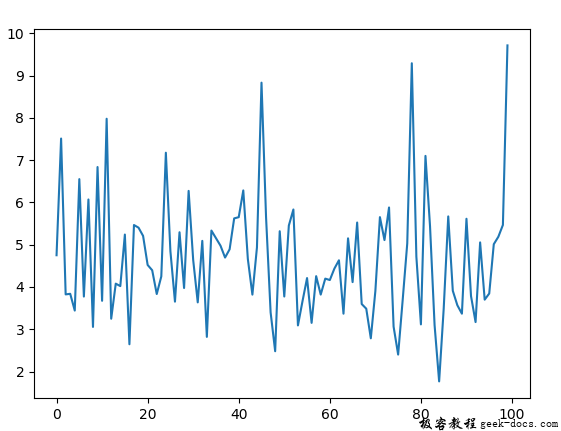Python random.gammavariate()
Python random.gammavariate()
The random module is used to generate random numbers in Python. These numbers are not actually random, but rather pseudo-random. This means that the numbers generated are deterministic.
random.gammavariate()
gammavariate() is a built-in method of the random module. It returns a random floating-point number with a gamma distribution.
Syntax: Random.gammavariate(alpha, beta).
Parameters:
alpha: greater than 0
beta: greater than 0
Returns: A random gamma-distributed floating-point number
Example 1:
# import the random module
import random
# determining the parameter values
alpha = 100
beta = 2
# using the gammavariate() method
print(random.gammavariate(alpha, beta))
Output:
4.647425239687329
Example 2: We can generate numbers multiple times and plot a graph to observe the gamma distribution.
# import the required libraries
import random
import matplotlib.pyplot as plt
# store the random numbers in a
# list
nums = []
alpha=9
beta=0.5
for i in range(100):
Temp = random.gammavariate(alpha, beta)
nums.append(temp)
# plotting a graph
plt.plot(nums)
plt.show()
Output:

Example 3: We can create a histogram to visualize the density of the gamma distribution.
# import the required libraries
import random
import matplotlib.pyplot as plt
# store the random numbers in a list
nums = []
alpha=9
beta=0.5
for i in range(10000):
Temp = random.gammavariate(alpha, beta)
nums.append(temp)
# plotting a graph
plt.hist(nums, bins = 200)
plt.show()
Output:
